
Many small business owners today think that owning a brick-and-mortar business excuses them from having to learn and master digital marketing.
Nothing could be further from the truth.
In fact, mastering SEO and local optimization for your locally run business will bring a higher ROI than just about any other marketing activity you use.
It's one of the quickest ways to quickly and simply (notice I did not say easily) get your business in front of thousands of new eyes and earn customers for life. With a few simple steps, you can set yourself on the path to long term digital marketing success.
But how do you start marketing your brick-and-mortar business in the digital world? What steps do you need to take over the next 30, 60, or 90 days to successfully grow your online reach and increase sales like you have never seen before?
I'm glad you asked.
In this article, I'm going to give you a step-by-step and day-by-day plan for marketing your brick-and-mortar business.
Thirty days from now, if you follow the steps I've outlined below, you'll be well on your way to having a successful and profitable local marketing plan in place.
The basics: Days 1-10
The irony of digital marketing is that the simplest steps are often the most important.
Sure, PPC advertising, advanced Facebook campaigns, and AdWords can play a huge role in boosting your sales. But what's next?
For brick-and-mortar business owners, particularly owners who don't think they are very “tech savvy,” following these simple steps for the first ten days alone will result in a huge increase in the number of sales they see from their marketing budget.
Step 1: Create a platform
Something I have found with many brick-and-mortar businesses is that the owners think that having a website is an unnecessary luxury.
Nothing could be further from the truth!
Having a place for all your customers and fans to congregate is one of the simplest and most important steps on your path to success.
The first step to mastering local SEO is the simplest one. Give your audience a place to find you!
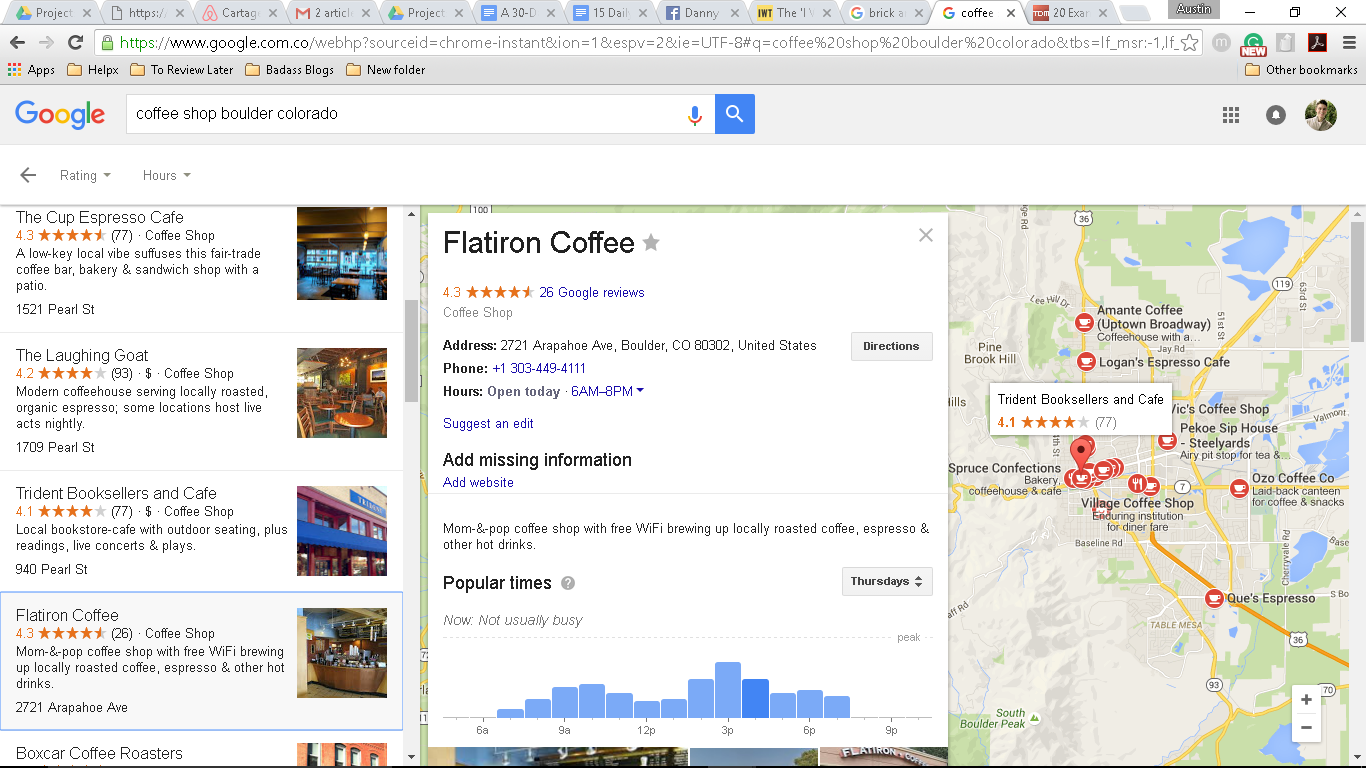
Notice that almost none of these shops have websites that come up in Google…
For the first 10 days of this master plan, focus on building your website and ensuring it has a great design. After that, focus on 1-2 social media platforms.
That's it.
Creating presence on a couple of platforms that are easy to navigate and even easier to find is the first key to your marketing success.
Once you develop your website, set up your Facebook page and a Twitter or Instagram account. Then, the real work begins.
And what is that “real work?”
Creating quality content.
Step 2: Start creating high quality content
One of the fallacies many entrepreneurs believe is that simply having a website with some on-page SEO is enough.
But that's not how Google works, and that's not how people work either.
If you want to attract new customers and build a loyal fan base, you need to place a premium on creating and curating high quality content.
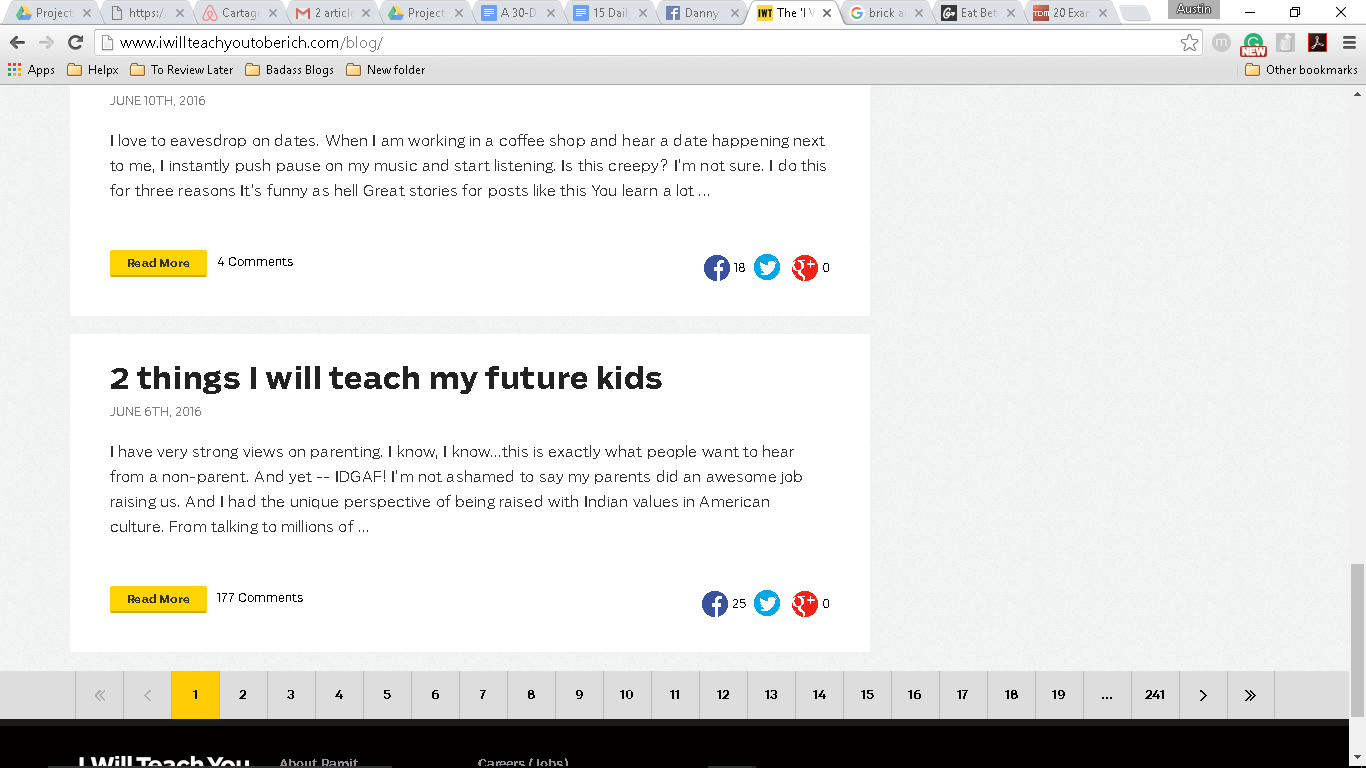
Look at the bottom of the image above. Ramit has 241 PAGES of content on his blog.
I've got 162 pages of blog articles on Quick Sprout.

Content is huge.
But how does this apply to marketing a brick-and-mortar business? Here's how…
Let's say you own a coffee shop in Boulder, Colorado.
You take the first 2-3 days and pay to create your website-design it to look great and navigate easily. Then you set up your Facebook page.
Now, it's time to start populating your website and your social media with killer content.
Continuing with the coffee shop example, the next step would be to start writing articles or filming videos based on your niche.
You could write an article about the best locations for growing coffee or about 3 unconventional brewing methods you can try today, or you could film a video showing people how to do cappuccino art.
The list of things you can do is endless.
By creating this content you will improve your chances of ranking on Google, and you will also start providing free value to customers, which will increase their trust and their desire to give you their business.
Step 3: Increase the number of your email subscribers with a lead magnet
Now that you have a great website and are regularly uploading content and sharing it via social media, it is time to increase your email subscriber list. That's where the real money is made!
The key to a successful lead magnet is to offer something that a customer would be willing to pay for-but free.
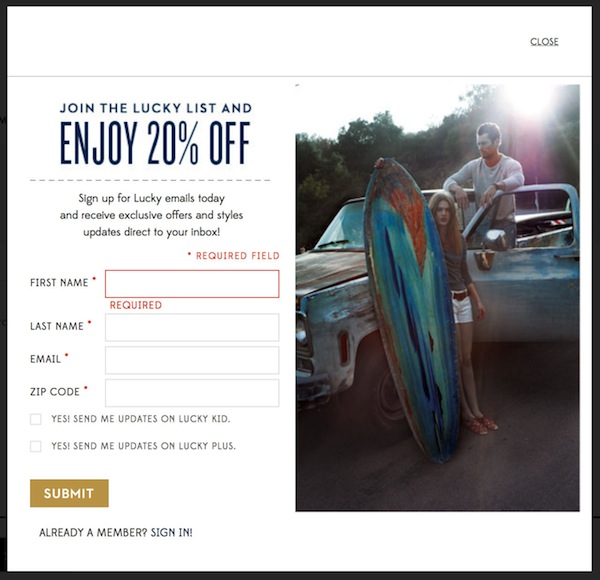
An excellent example of a lead magnet is from Lucky Brand (above).
Back to the coffee shop…
A great marketing method used by many successful brick-and-mortar owners is the free giveaway.
If someone has found your site or is in your store, offering them a free coffee or pastry (which they would normally pay for) in return for access to their email is a win for both parties.
They get something free. You get a direct line to market your company.
Once you have collected the email, you can start sending updates about specials you are running, events you are putting on, and other cool things happening with your business.
Anytime you have a special event or a 2-for-1 deal, people will actually know about it. They will then take advantage of it.
Mastering local SEO: Days 10-25
Many brick-and-mortar business owners make another mistake when delving into the world of SEO. They don't fully understand the difference between “regular” and “local” SEO.
The biggest difference is that local SEO contains a geographical aspect. This geographical information is crucial in “convincing” Google that you're a bona fide local company serving local people.
The entry into local SEO may seem a little bit more complicated than normal SEO. Why? Because it's no longer just about the keywords. There's an element of mystery.
The result? You may have experienced this yourself. Few businesses execute local SEO efficiently.
However, in my opinion and experience, local SEO is easier. Why? Because there is less competition!
Don't worry. I'll remove some of the mystery and help you understand how it works.
Here are some of the essential ways to get started on your path to local SEO mastery.
Step 1: Set up Google Search Console and Analytics
These two tools are absolutely instrumental for successful on-page SEO.
There is a ton of information you will be able to gather about your website from these tools. Using them effectively will allow you to run tests, analyze the results, and make changes as necessary.
Here's how to set up Google Analytics.
- First, create an Analytics account here.
- Sign in to your new account.
- Select “Admin.”
- Select an account from the “account” column.
- Select a new property from the “property” column.
- Click “Tracking Info” and then “Tracking Code.”
- Copy the ID.
- Insert this number into your website's code.
Here's how to set up Search Console:
- Create a Search Console account here.
- Log in to your new account.
- Click “Add a site.”
- Add your website's URL.
- Copy the ID.
- Add it to your website's code.
Step 2: Make sure you have the correct NAP data on your site
While this may not seem like a big deal, it is one of the quickest ways to accidentally shoot yourself in the foot with your SEO pursuits.
What's NAP?
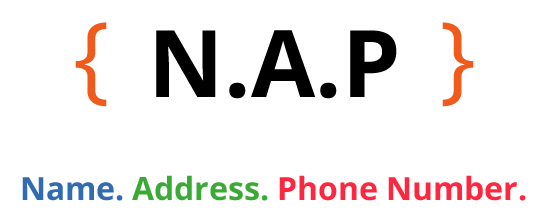
It's the Name, Address, and Phone number of your business.
If you do not have the EXACT same Name, Address, and Phone Number on your website that you have on your Google My Business account, you will basically ruin all the hard work you have put into mastering local SEO.
Let me give you a few pointers on doing the NAP portion right.
Make sure the phone number listed is your local number (no 1-800 numbers).

Make sure the NAP info is listed as text on the page and not as an image. You need web crawlers to read the information. They won't be able to do that if it's in an image.
Include the NAP info in your website footer if possible. This means it will be visible on all pages.
If you've had a different name, address, or phone number in the past, find the variations anywhere on the web and correct them. You don't want to confuse users or web crawlers. NAP consistency is important!
Step 3: Optimize your meta descriptions and title tags
For on-page optimization, this is one of the most important steps you can take.
The first step is to make sure your title tag includes these three things:
- Your city
- Your state
- The keyword you're trying to rank for
It is easy for this to come across as spammy and artificial, so put some time and effort into this before you hit “Publish.”
For example, these websites are perfectly setup for local SEO success:
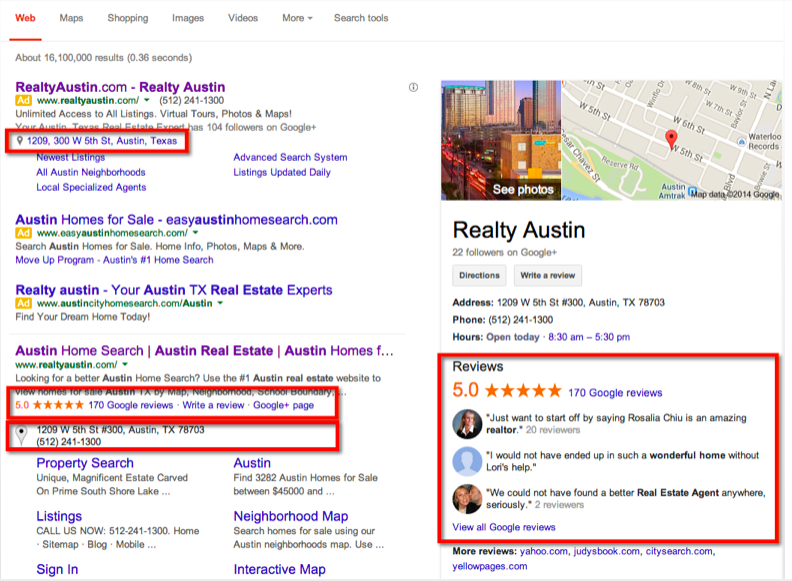
If you're looking for some more inspiration, check out this article for a list of local SEO-optimized title tags.
Next, you want to optimize your meta description.
The meta description is what appears beneath your title tag. It explains a little bit about your company and what you do. The meta description appears in the SERPs to help users understand what they're about to click on.
I recommend that you include your city, state, keyword, and phone number for maximum efficiency.
A meta description doesn't technically improve your SEO. It's designed for users. However, user behavior does influence SEO, so it's still important to optimize this bit of information.
Step 4: Include your hours of operation and directions
According to one study, Google said that 54% of smartphone users who search for a local business are searching for the hours of operation. And 53% wanted directions.
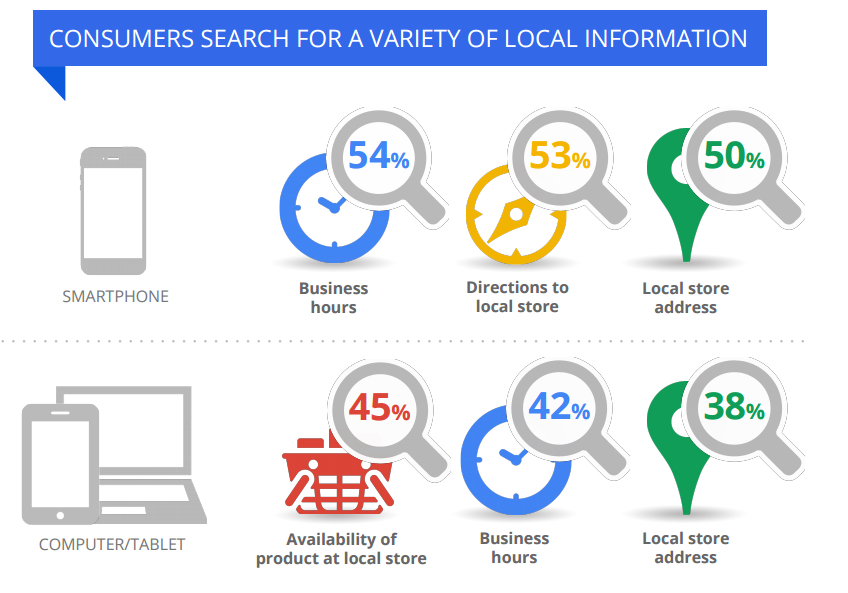
The simplest thing to do is simply put an “Hours of Operations” or “Business Hours” heading and image next to your maps widget.
This will make life easier for your customers. Plus, it will make Google love you.
Step 5: Leverage the power of social proof
While it doesn't directly influence your local SEO ranking, including customer testimonials really helps. Adding BBB ratings, integrating Yelp, or citing other highly trusted sources will build customer trust.
In the example below, The Worthwhile Company cited their “Small Business of the Year” award from the local chamber of commerce. Information like this helps local residents to feel a greater degree of trust in the business.
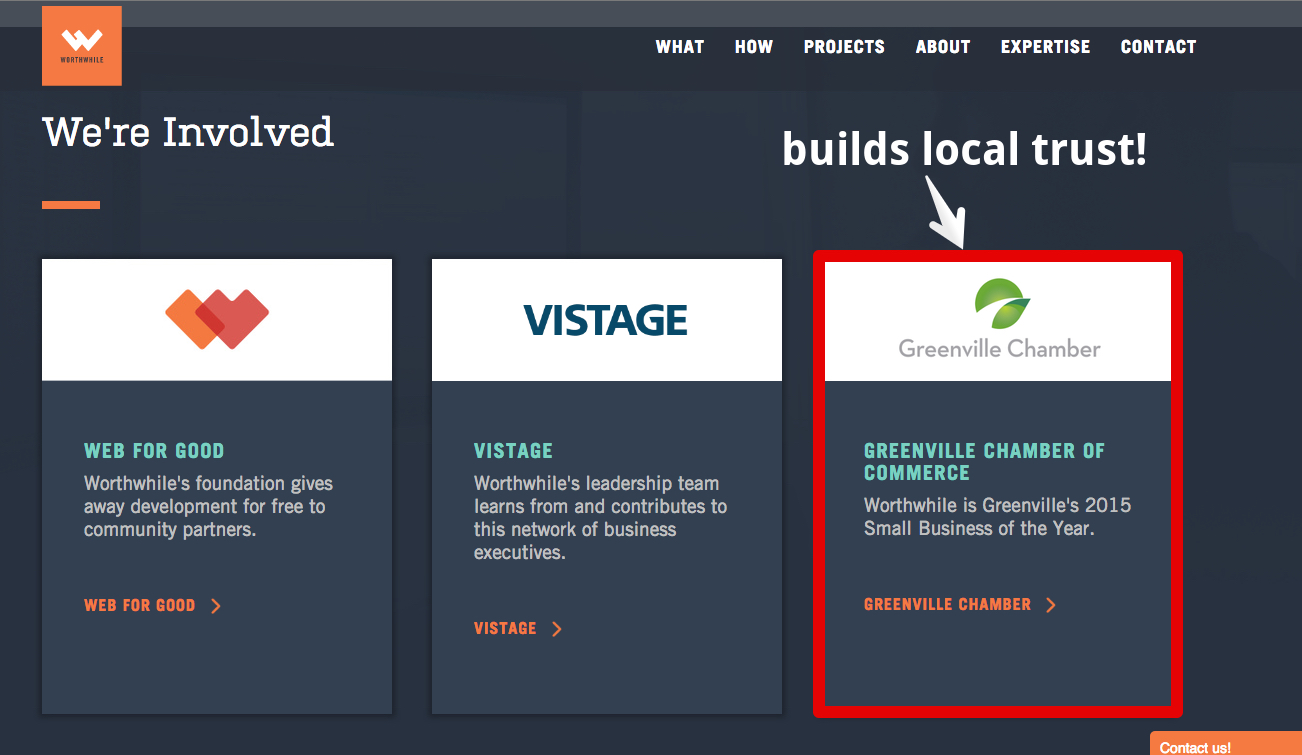
Social proof also decreases your site's bounce rate, increases the views on your site, and likely increases your opt-ins-all things Google is looking for.
Reaping the rewards and keeping the customers: Day 25-30
By following all the above advice, you will likely see an increase in your SEO ranking and the number of emails you collect within the first 30 days.
Things will move slowly at first.
That's okay.
These things take time. Slow and steady wins the race.
The final step is to continue producing great content that you can rank on Google. Educate yourself on more advanced local SEO tactics you can start implementing. Most importantly, keep your customers happy.
The more satisfied customers you have, the more people will share your site with others, the more email opt-ins you will receive, and the better your business will be.
All that's left to do is sit back and reap the rewards of a job well done.
And of course, keep on hustling.

Conclusion
To many entrepreneurs, SEO seems like a black box. And local SEO? It's even more of a mystery.
Often, it's viewed as something to be feared, something far too complicated to get involved in, and something that you sure as heck don't have the required experience to excel at.
My hope, however, is that after reading this article, you'll realize that SEO is just like any other skill. With a few simple tweaks, you can massively improve your local business's results for years to come.
So, take this advice, and implement it. You'll see the results for yourself.
What's your experience with using digital marketing to drive a brick-and-mortar business? Share your worst mistakes or best tips!
No comments:
Post a Comment